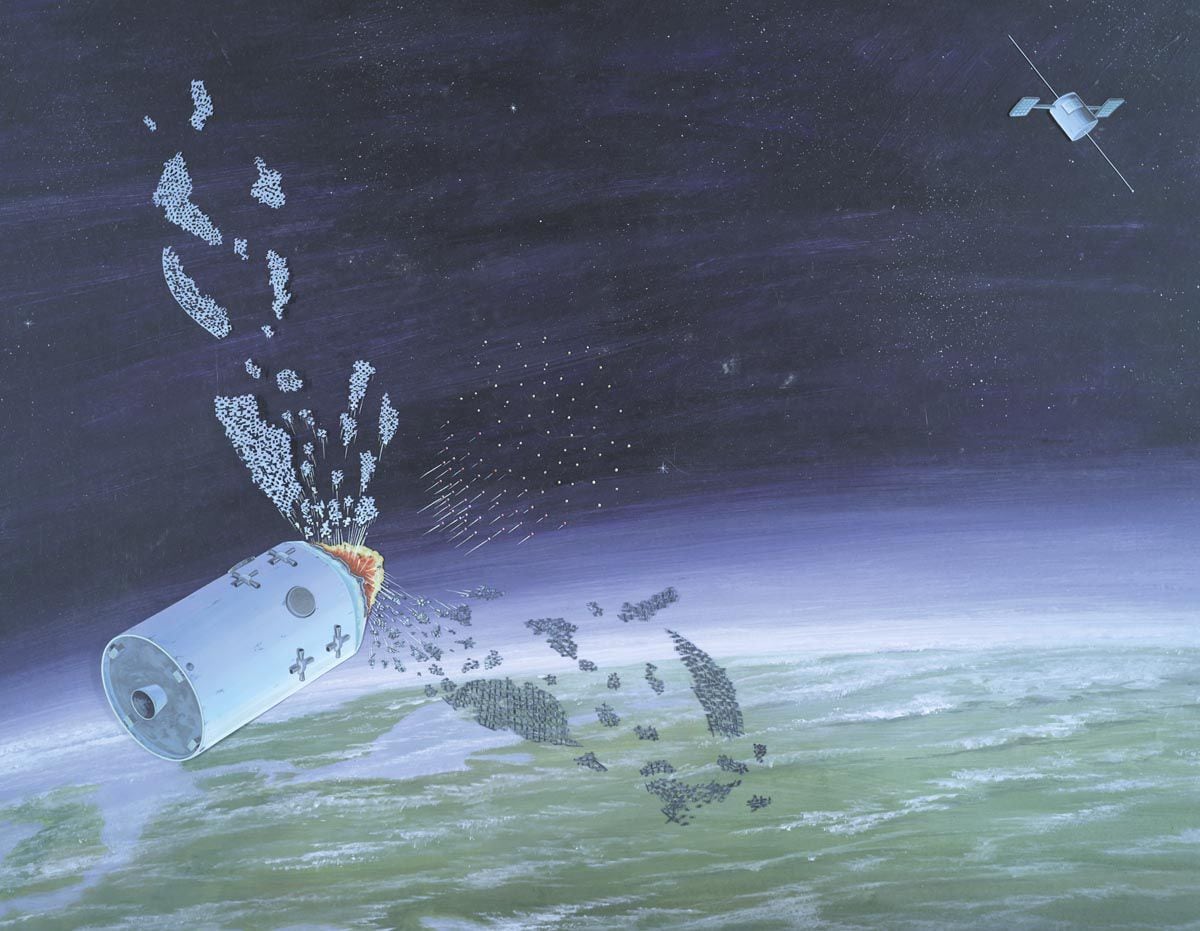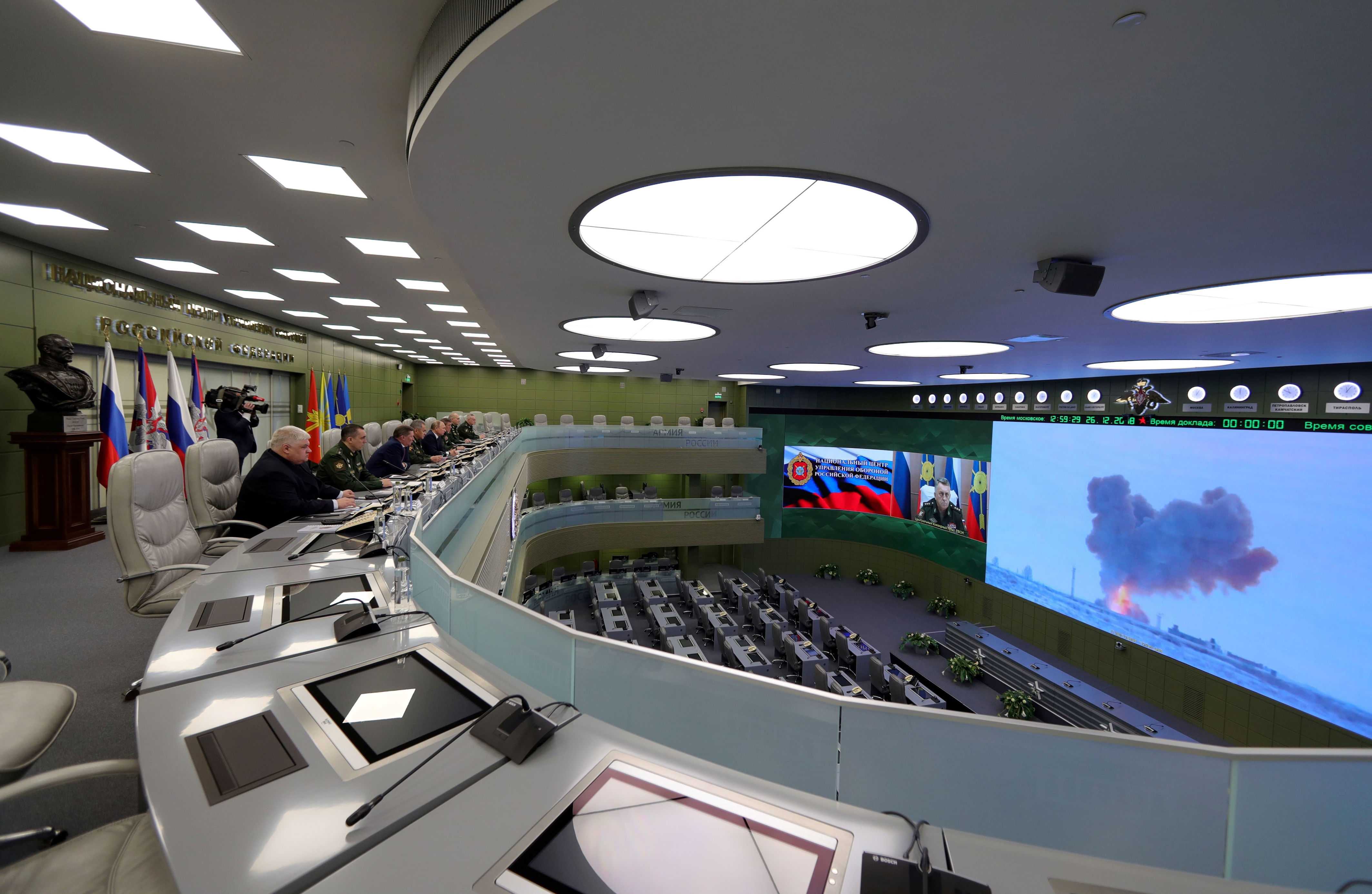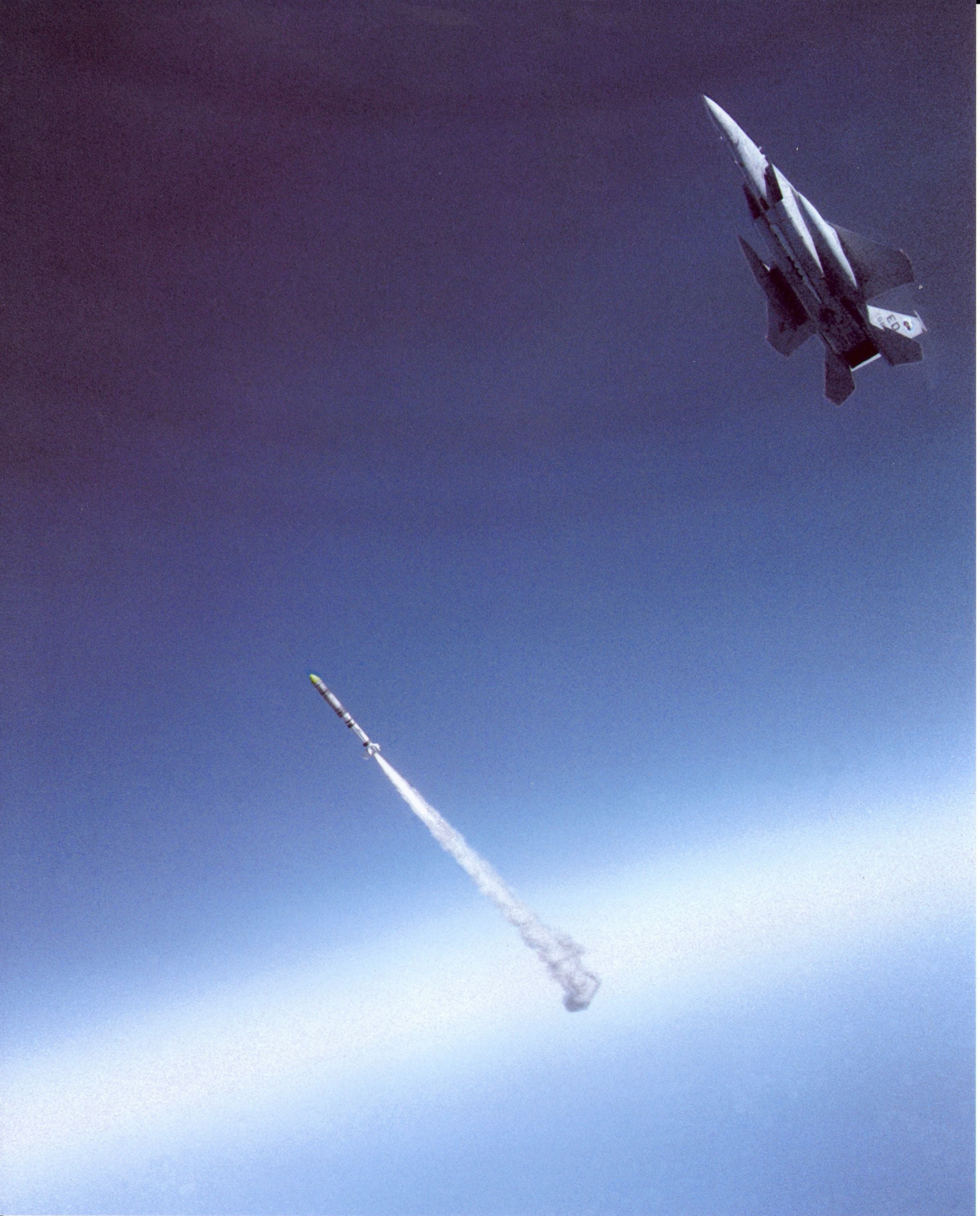The chairman of the US House Intelligence Committee has issued a cryptic warning stating that the country is facing “a serious national security threat” that reportedly is connected to Russian nuclear capabilities.
Moscow on Thursday denied as a “malicious fabrication” a New York Times story that said the threat involved a space-based nuclear weapon that could target other satellites. If confirmed, such a capability would pose a massive risk to US and global communications.
The story came to light after Mike Turner, a Republican congressman who chairs the House intelligence committee, issued his warning on Wednesday.
Any kinetic attack against a satellite, for example a US or Nato member satellite would obviously be a huge escalation
Juliana Suess, Royal United Services Institute
Experts told The National that the warning of new Russian capabilities – even if not yet operational – is ominous.
That’s because the probable target for space-based weapons is other satellites.
The destruction of just one, according to one study, could produce 100,000 pieces of space debris that would circle Earth for years, crashing into other satellites and manned space stations at tens of thousands of kilometres per hour.

An artist’s impression of a Russian anti-satellite weapon. Photo: Public Domain
That could create a chain reaction of satellite destruction. Experts say all human activity dependent on some 7,000 satellites could be wiped out, disrupting global communications and causing untold financial damage.
US intelligence is reportedly worried about a new Russian Asat (anti-satellite weapon).
“Nuclear weapons have been implied but there’s also been discussion that it might be a nuclear-powered satellite – either a reactor or a RTG, radioisotope thermoelectric generator,” said Thomas Cheney, an expert on International Space Law at Northumbria University.
He said that neither of these capabilities themselves would be new – as far back as 1962 a high-altitude US test blast know as the Starfish Prime test disabled several satellites in orbit.
“The disabling of satellites and concerns about radiation from nuclear explosions creating artificial radiation belts which would endanger satellites and astronauts was one of the motivations behind the Partial Test Ban Treaty,” Mr Cheney said.

Russia’s President Vladimir Putin overseeing the test of a hypersonic missile system called Avangard in 2018. Reuters
The idea that Russia has worrying anti-satellite capabilities is also not new.
In one US defence report in 1984, a US analyst said that “the Soviet Union probably has sufficient Asat satellites to destroy all Nato and US military satellites within one week”.
Any state with nuclear weapons and the ability to launch nuclear weapons into outer space has a “nuclear Asat capability,” Mr Cheney says.
“However placing nuclear weapons in orbit would be concerning as this is clearly and explicitly prohibited by Article IV of the Outer Space Treaty. That would be yet another Russian flagrant violation of international law,” he said.
Ralph Dinsley, an RAF veteran who runs 3S Northumbria Ltd, a space-focused consulting firm, said a nuclear detonation in low-Earth orbit would be an “effective but indiscriminate weapon which is likely to damage friend and foe together”.
“It was attempted in the early 1960s and disabled a number of friendly satellites including the Telstar system,” he said.
From spy satellites to nuclear space war
Over the past three decades, an increasing number of countries have created space forces as dedicated branches of their militaries.
Increasingly, these efforts envision conflict in space, while to date, most satellites have been used for spying or detecting missile launches, or used for communications to ground and air forces.
Terrestrial forces meanwhile have long considered ways to strike back at the “ultimate high ground” in war.
Adversaries have considered “blinding” enemy early-warning satellites as cover for nuclear missile “first strikes,” which in the Cold War could have given one side a slight edge in a potentially apocalyptic battle.
Destroying satellites in low-Earth orbit was quickly deemed possible and in 1958, the US began tests launching powerful ballistic missiles from aircraft at target satellites travelling at around 29,000kph, succeeding in 1963.
Further testing refined Asat capability and in 1985, the US shot down a decommissioned satellite 550km above Earth, by firing a missile vertically from an F-15 fighter jet into space.

The airborne launch of an ASAT missile in September 1985, which destroyed an orbiting satellite
But controversy has grown around Asat weapons and especially concern over debris.
The space arms race has also expanded and in 2007, China shot down one of its weather satellites, sending a cloud of around 3,000 visible pieces of debris around the world.
The US revived Asat testing in 2008, destroying a broken weather satellite that it claimed posed an environmental risk on re-entry to the atmosphere due to toxic gas, amid Chinese and Russian protest.
Russia launched another Asat test in 2021 but since then, the US has committed to creating “responsible” Asat weapons that produce “soft kills,” which “dazzle” or blind satellite sensors and optics with lasers, electronically jam their communications or even use other satellites to push them out of orbit.
Russia and China have also been working on similar technology, as well as powerful ground-based lasers.
In 2022, China used a satellite designated SJ-21 to push a decommissioned satellite far from Earth into what is called a “graveyard orbit,” something that would render a functioning satellite useless.
Nuclear weapons in space
Some experts have claimed Russia is interested in deploying a nuclear-powered satellite, which could manoeuvre by generating electricity that would in turn heat inert gas for propulsion. Again, this idea would not be new.
“If it is nuclear-powered, that is less concerning from a strict perspective of international law and again nuclear-powered satellites are something the Soviets used not infrequently,” Mr Cheney said.
However, as Kosmos-954 demonstrated when it scattered radioactive debris over Canada, nuclear-powered satellites are not to be taken too lightly, Mr Cheney said, referring to a 1978 Soviet nuclear satellite accident.
Whatever is planned by Moscow, Russia will have to think hard before launching new anti-satellite capabilities.
“Any kinetic attack against a satellite, for example a US or Nato member satellite would obviously be a huge escalation and present a red line, because we haven’t seen it yet,” says Juliana Suess, an expert in space warfare at Rusi, a UK defence think tank.
Space militarisation may go back decades to the Cold War, she says, but is accelerating quickly amid global defence spending that surged above $2 trillion in 2023.
“We have seen the use of counter space measures, in terms of jamming, spoofing cyber attacks against satellites, we’ve seen all of that, and they are now a part of modern warfare, and space capabilities present an extension of that battlefield because space enables terrestrial capabilities.
“We’ve seen the cyber attack on Viasat, we’ve seen what looks like spoofing and jamming attacks, as well as cyber attacks against Starlink. So in the electromagnetic sphere, that is really nothing new, what would make it new would be a kinetic attack. Several states have tested this capability, Russia most recently in 2021.”
News Related-
AWS and Clarity AI to use generative AI to boost sustainable investments
-
Ref Watch: 'Enough' of a foul to disallow Man City goal vs Liverpool
-
Day in the Life: Ex-England rugby star on organising this year's Emirates Dubai Sevens
-
Pandya returns to MI, Green goes to RCB
-
Snowstorm kills eight in Ukraine and Moldova, hundreds of towns lose power
-
‘This is why fewer Sikhs visiting gurdwaras abroad’: BJP after Indian envoy heckled in Long Island
-
Inside a Dubai home with upcycled furniture and zero waste
-
Captain Turner aims for Pitch 1 return as JESS bid to retain Dubai Sevens U19 crown
-
No Antoine Dupont but Dubai still set to launch new era for sevens
-
Why ESG investors are concerned about AI
-
Your campsite can harm the environment
-
Mubadala, Saudi Fund deals on US radar for potential China angle
-
Abu Dhabi T10 season seven to kick off with thrilling double-header
-
Eight climate fiction, or cli-fi, books to consider before Cop28
